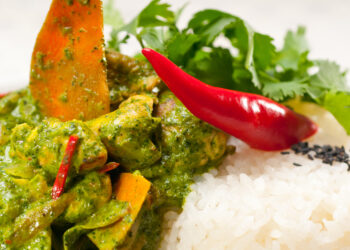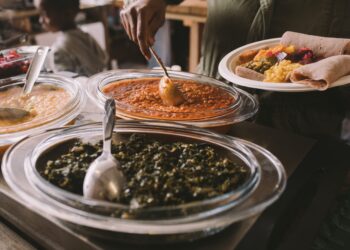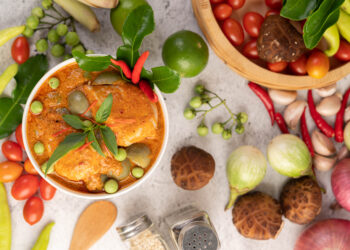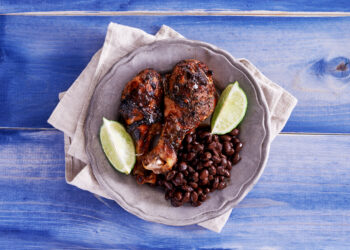Bread, glorious bread! This humble staple has been a culinary cornerstone across the globe for centuries. Indeed, when we say “bread around the world,” we’re talking about an incredible tapestry of textures, flavors, and traditions. From the crusty baguettes of France to the airy injera of Ethiopia, each country brings its own spin to this beloved baked good. Curious about these varied doughy delights and the stories they tell? Grab a cup of tea, get comfy, and let’s embark on a tasty journey exploring the world’s most cherished breads. You’re in for an absolute treat!
Unveiling The Hearts of Global Breads
Bread is an integral part of many cultures, a staple that’s been baked, broken, and shared throughout the ages. “Bread around the world” refers to the diverse array of bread types that are unique to various cultures and regions. From the flaky croissants of France to the hearty sourdough of San Francisco, bread reflects culinary traditions, local ingredients, and, often, the history of a place. For instance, India’s naan is a perfect example for scooping up curry, while focaccia from Italy pairs beautifully with olive oil and balsamic vinegar. Each region boasts its own charm and unique narrative, where bread becomes more than just a culinary creation. Whether it’s the soft, sweet rolls of Japan or the aromatic pita of the Middle East, bread serves a universal purpose: to nourish and bring people together.
Know the History of Bread Across the Globe!
Bread has been a staple of human diets for thousands of years, dating back to ancient civilizations. The earliest bread was unleavened and made simply with flour and water, as seen in the diets of the Egyptians, who later discovered yeast fermentation, giving rise to the leavened bread we love today. As bread spread across the globe, each culture adapted it to their unique ingredients and culinary needs. In Europe, for example, sourdough gained popularity, while in India, flatbreads like naan became a kitchen staple. Certainly, bread is more than just food; it is known to be a shared human experience.
Bread, one of humanity’s oldest prepared foods, traces back over 14,000 years to the Natufian culture in the Levant. Evidence of its early creation, involving grinding cereals and roots, reflects its longstanding role in survival and sustenance. In ancient Egypt, bread making flourished with advancements like yeast fermentation, creating lighter loaves. As civilizations expanded, bread diversified. The Romans introduced milling innovations, enhancing texture and availability. Medieval Europe saw bread baked in communal ovens, fostering community bonding. Each region adapted bread to local grains and tastes, from dense German rye to rice-based Japanese mochi. Thus, throughout history, bread evolved, adapting to cultural shifts and technological advancements, making it a timeless symbol of culinary heritage worldwide.
Global Bread Recipes: A Journey Through Diverse Cultures
Ingredients:
– 500g plain flour
– 1 packet (7g) active dry yeast
– 300ml warm water (approx. 45°C)
– 1 tsp salt
– 2 tbsp olive oil
– 1 tsp sugar
Instructions:
– Step 1: In a small bowl, combine the warm water and sugar, stirring until dissolved. Sprinkle the yeast on top and let it sit for about 5-10 minutes until frothy.
– Step 2: In a large mixing bowl, combine the flour and salt. Make a well in the centre and pour in the yeast mixture and olive oil.
– Step 3: Mix to form a soft dough, adding a little more water if necessary. Knead on a floured surface for about 10 minutes until smooth and elastic.
– Step 4: Place the kneaded dough in a lightly oiled bowl, cover it with a damp cloth, and let it rise in a warm place for 1-2 hours or until doubled in size.
– Step 5: Preheat your oven to 220°C (200°C fan) or Gas Mark 7.
– Step 6: Once risen, punch down the dough and knead briefly. Shape it into a loaf or desired form and place on a baking tray.
– Step 7: Allow the dough to rise again for about 30 minutes. Optionally, you can make slashes on top with a sharp knife for decoration.
– Step 8: Bake for 25-30 minutes or until the bread sounds hollow when tapped on the bottom. Let it cool on a wire rack before slicing and enjoying.
What are the Advantages of Bread Across the Globe?
– Cultural Diversity: Bread, in its various forms, is a staple that’s enjoyed on every corner of the globe. By exploring bread from different countries, one gains a window into diverse cultures and their unique culinary traditions. Every loaf tells a story, from the flatbreads of the Middle East to the sourdoughs of Europe.
– Nutritional Value: Different types of bread offer a range of nutritional benefits. Whole grain breads are rich in fibre, vitamins, and minerals. Including a variety of breads in your diet can help meet your nutritional needs and add more flavour and texture to your meals.
– Creativity in Cooking: Trying out bread recipes from different countries can spark culinary creativity. Whether it’s mastering the perfect French baguette or trying your hand at Indian naan, the possibilities are endless. This creativity not only enhances your cooking skills but also brings joy and variety to your kitchen.
– Global Connection: Sharing bread recipes and techniques can create a sense of connection across cultures. It’s interesting to note that despite the diverse methods and ingredients, bread serves as a communal bond that transcends borders.
– Easy Adaptability: Many international bread recipes can be adapted to local ingredients, making it an accessible culinary exploration for home cooks. With a little experimentation, you can introduce global flavours into your local cuisine seamlessly.
Global Bread Exploration: Tips and Tricks
– Start by exploring the different types of bread that represent various cultures. Each country has its staple, from France’s baguettes to India’s naan.
– If you’re trying to make international bread at home, use authentic recipes to capture the unique flavors and textures representative of their origins.
– Don’t hesitate to experiment with flour. Bread around the world uses different flours; for instance, try corn flour for cornbread or rye flour for Swedish limpa.
– Get familiar with fermentation periods. Some bread like San Francisco sourdough relies on a longer fermentation process to develop its distinct taste.
– Attend local baking classes or workshops to meet others who share your interest and to learn baking methods for various international breads.
– When you travel, buy bread from local bakeries to understand the traditional techniques and ingredients firsthand.
– Read about the cultural significance of each type of bread. For example, Lavash in Armenia is a symbol of hospitality and life. Understanding cultural stories can enhance your appreciation.
– If new to bread-making, start simple with flatbreads. They’re less intimidating and a great way to grasp basic bread techniques.
– Swap stories and recipes with fellow enthusiasts online. There are communities dedicated to bread from around the world.
– Don’t rush the process. Making bread is an art. Enjoy each step, from kneading the dough to watching it rise.
– Embrace failures as learning points. Not every loaf will turn out perfect, but each attempt brings you one step closer to mastering it.
Good News for Bread Lovers: Delicious Destinations Awaits!
Breads are an adventure for your taste buds, and there are tons of places where you can dive right into this delicious adventure. Whether you’re in the mood for a fragrant French baguette or a soft, fluffy Japanese milk bread, you’re in for a treat. Discover these vibrant worlds of bread at some fantastic spots.
– Paris, France
– Poilâne: Famous for its hearty, sourdough loaves.
– Istanbul, Turkey
– Simit Sarayı: Known for its sesame-coated simit, a Turkish delight that’s perfect with tea.
– Rome, Italy
– Roscioli: Offers a delightful range of Italian breads including their renowned ciabatta.
– Tokyo, Japan
– Kimuraya: Try their anpan, a sweet roll filled with red bean paste.
– San Francisco, USA
– Tartine Bakery: Celebrated for its sourdough bread, a must-try in the city’s eclectic food scene.
– Mumbai, India
– Yazdani Bakery: Known for its traditional Parsi breads, such as brun pav and ladi pav.
– Munich, Germany
– Bäckerei Hofpfisterei: Offers a wide variety of traditional German rye bread.
And so, wherever your travels take you, keep an eye out for these irresistible bread spots and enjoy the global bread tour!
Conclusion
Bread is not just a food but it is a universal delight that brings us together, crafting stories and sharing warmth across cultures. From sourdough loaves in Europe to the soft, fluffy flatbreads of the Middle East, bread tells the tales of history and tradition. Exploring these culinary marvels enhances our appreciation for diverse cuisines. Dive deeper into this delicious journey and discover a world of flavours. Visit Currybien for even more culinary adventures and insights. Share your experiences with us and let’s keep the conversation alive in our food-loving community!




















